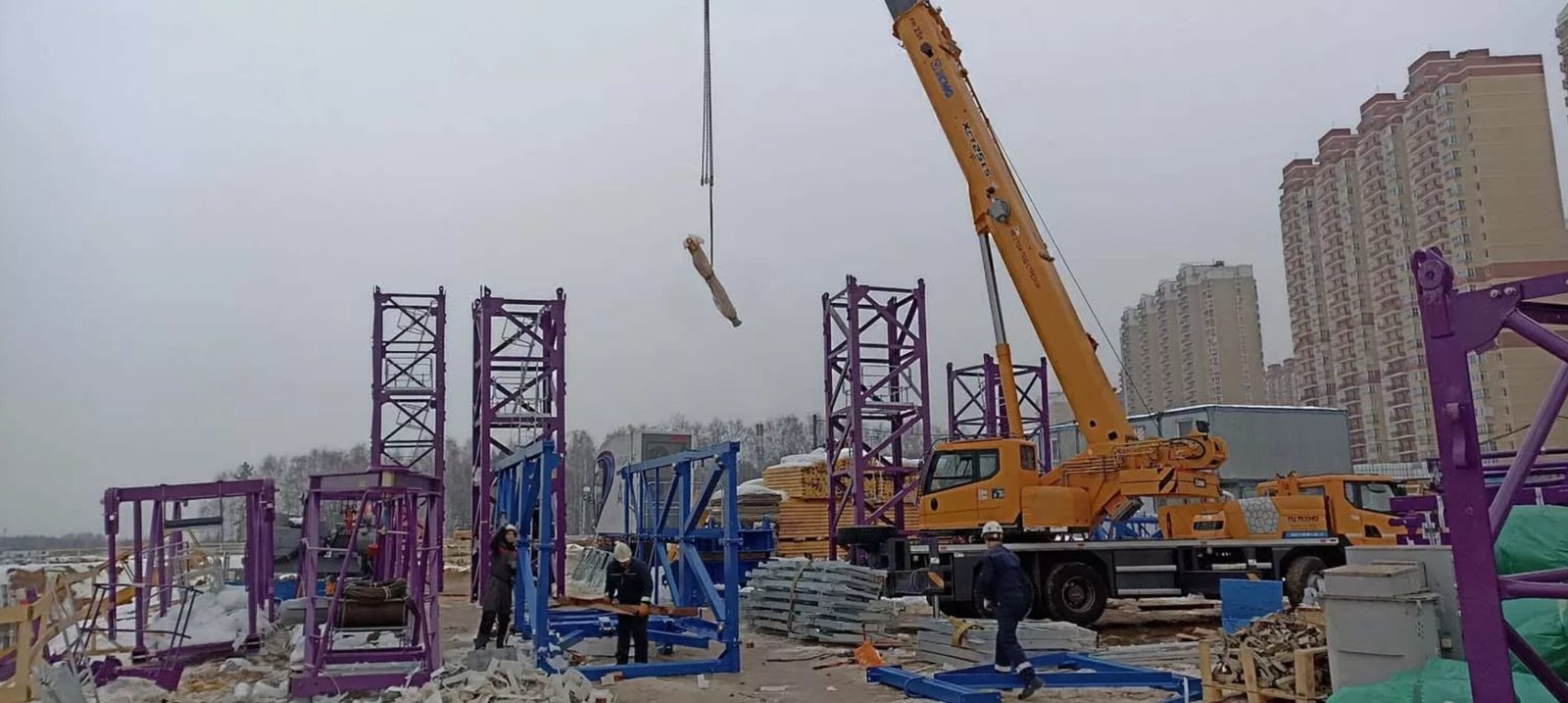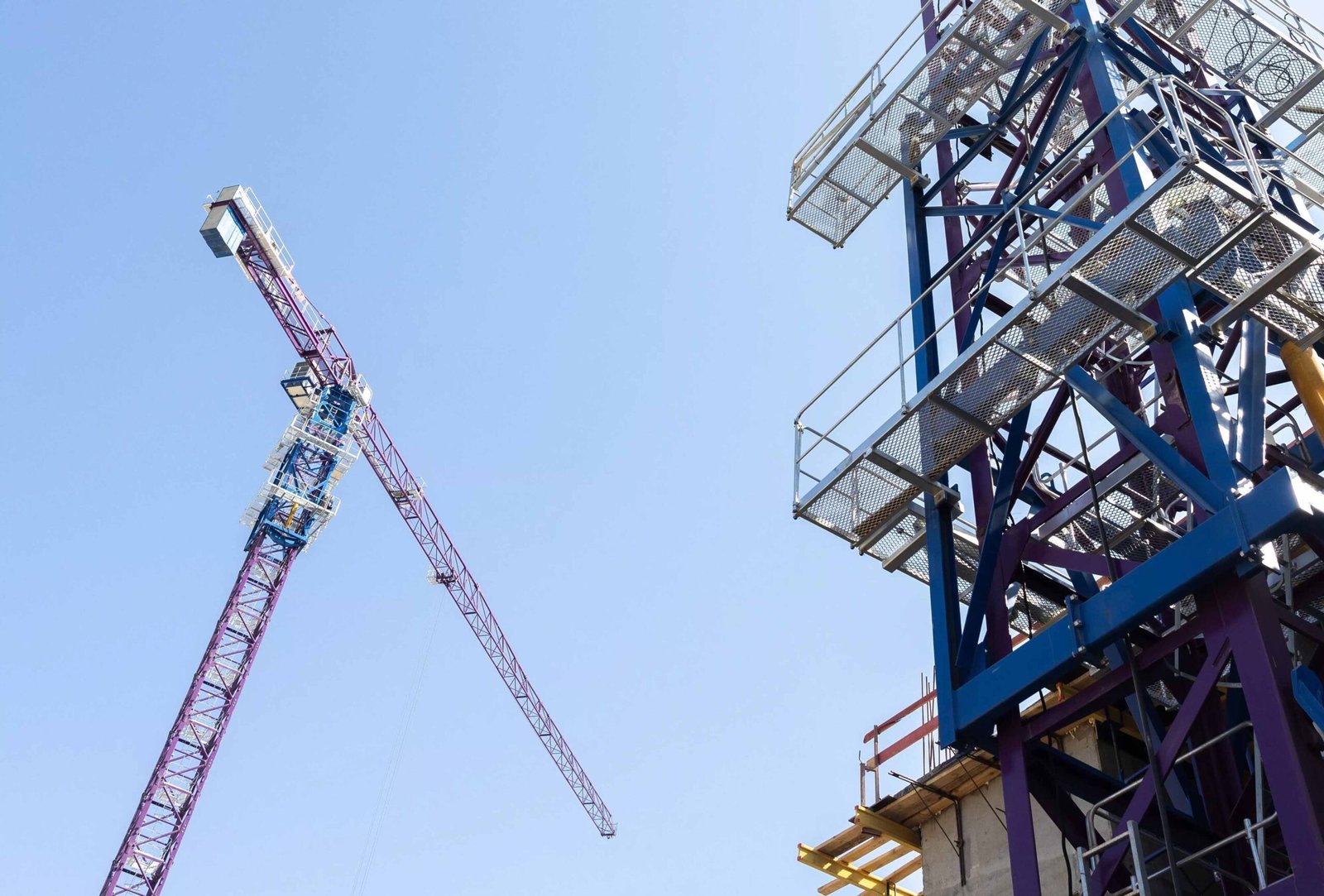
In construction, tower cranes are essential for lifting heavy loads. One critical component that helps these cranes maintain stability is the counterweight1. But how are these counterweights secured? How do they work to keep the crane balanced? Let’s dive into the details of counterweights in tower cranes, their function, how they are attached, and their role in crane stability.
Counterweights are critical to tower cranes, helping them balance heavy loads. They are securely attached to prevent movement during operation.
The counterweights of a tower crane help maintain the machine’s balance by counteracting the force created when lifting heavy loads. Without these counterweights, the crane would be at risk of tipping over. But how are they attached, and what role do they play in crane operation? Let’s take a closer look.
How Are Counterweights Attached to Cranes?

Counterweights are crucial for ensuring that a tower crane remains stable during lifting operations. But how exactly are these weights attached to the crane?
Counterweights are securely attached to the crane’s back and base using a system of pins and bolts, ensuring that they stay in place.
The counterweights of a tower crane are typically placed at the rear of the crane, on a dedicated platform or frame designed specifically for this purpose. These weights are secured to the crane’s base or the counterweight platform using a combination of pins, bolts, and locking mechanisms. The attachment system is designed to handle the dynamic forces that occur during crane operation, keeping the counterweights firmly in place.
A key part of securing the counterweights is ensuring that they are evenly distributed. This distribution prevents uneven forces on the crane, which could lead to instability or tipping. In many cases, counterweights are made of concrete or steel and come in modular sections, allowing them to be adjusted based on the load being lifted.
Counterweight Attachment Process:
| Step | Description |
|---|---|
| Step 1: Platform Setup | A platform or frame is installed at the rear of the crane. |
| Step 2: Counterweight Placement | Weights are placed on the platform, often in modular sections. |
| Step 3: Securing with Pins and Bolts | Weights are fixed with pins, bolts, or locking systems to prevent movement. |
| Step 4: Distribution Check | Ensure that the counterweights are evenly distributed for balanced operation. |
What Is the Counterweight of a Tower Crane?

The weight of a tower crane’s counterweights plays a vital role in its overall stability. But just how heavy are these counterweights?
The counterweights of tower cranes can range from several tons to over 100 tons, depending on the crane’s capacity and the load being lifted.
The size and weight of the counterweights depend on the crane’s lifting capacity and the loads it will be handling. For smaller cranes, counterweights may weigh only a few tons, while larger tower cranes, used on large construction sites, can have counterweights that weigh up to 100 tons or more.
The counterweight must be heavy enough to balance the crane when it is lifting large loads. For this reason, counterweights are made from materials like cast steel or concrete, which are dense and heavy enough to provide the necessary stability.
Common Counterweight Weights for Tower Cranes:
| Crane Capacity | Typical Counterweight Weight |
|---|---|
| Small Cranes | 5 - 10 tons |
| Medium Cranes | 10 - 30 tons |
| Large Cranes | 30 - 100 tons or more |
How Is a Tower Crane Anchored?

In addition to counterweights, tower cranes are securely anchored to the ground to ensure stability during operation. But how is a tower crane anchored?
Tower cranes are anchored to the ground using large concrete foundations2 that provide stability against lifting forces.
Tower cranes are typically anchored through a massive concrete foundation that supports the entire structure. The crane’s base is bolted to this foundation, which helps prevent the crane from tipping over under the weight of the load or during high winds. The foundation must be deep and robust enough to support the combined weight of the crane, counterweights, and the loads being lifted.
Anchoring the crane to the ground is crucial because it ensures that the forces exerted by the crane’s lifting action do not destabilize the entire machine. In some cases, the crane’s base may also be bolted into a steel baseplate or connected to additional ballast to further increase stability.
Anchoring Methods for Tower Cranes:
| Anchoring Method | Description |
|---|---|
| Concrete Foundation | The most common method; the crane is bolted into a large foundation. |
| Ballast Weight | Additional weights may be placed around the base for added stability. |
| Steel Baseplate | A steel plate that further secures the crane to the foundation. |
Are Counterweights Connected to the Crankshaft?

One question that often arises is whether counterweights are connected to the crane's crankshaft. But how do these two components interact?
Counterweights are not connected to the crane’s crankshaft. They work independently to balance the crane’s load.
Counterweights are not directly connected to the crankshaft or mechanical components of the crane. Instead, they serve a passive role, working purely to balance the crane. The crankshaft or winch system is responsible for lifting and lowering the crane’s load, while the counterweights counteract the forces generated by lifting heavy objects.
The counterweights’ main purpose is to prevent the crane from tipping, not to interact with the lifting mechanism itself. They are positioned on the opposite side of the load to offset the weight being lifted and maintain the crane’s stability during operation.
Crankshaft vs. Counterweight Function:
| Component | Function |
|---|---|
| Crankshaft/Winch | Lifts and lowers loads by powering the lifting system. |
| Counterweights | Balances the crane and prevents tipping during lifting. |
How Does Counterweight Work?

Counterweights are a key element in maintaining the balance of tower cranes. But how exactly do they work?
Counterweights function by providing a counteracting force to balance the load and prevent the crane from tipping.
The counterweight works by exerting an opposite force to balance the load being lifted. When a crane lifts a heavy load, the weight of the load creates a force that could cause the crane to tip over. The counterweight, positioned on the opposite side of the crane, provides an equal and opposite force to balance the crane.
The greater the weight of the load being lifted, the more counterweight is required to keep the crane stable. This balance ensures that the crane can operate safely, lifting heavy materials without risking tipping or losing stability.
Counterweight and Load Balance:
| Crane Load Weight | Required Counterweight |
|---|---|
| Light Loads | Minimal counterweight, just enough for stability. |
| Heavy Loads | Much larger counterweights are required to maintain balance. |
Conclusion
Counterweights play an essential role in ensuring the safety and stability of tower cranes during lifting operations. By balancing the load and preventing tipping, these weights enable cranes to handle heavy materials with ease. Securing the counterweights properly, along with anchoring the crane to a solid foundation, ensures that cranes can operate efficiently and safely on construction sites.






